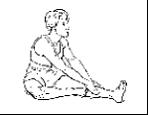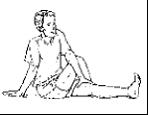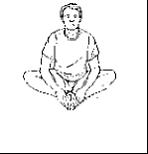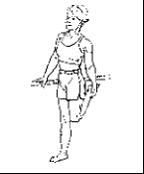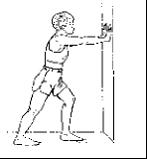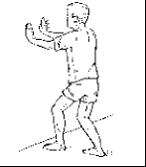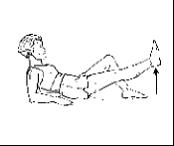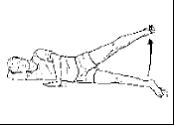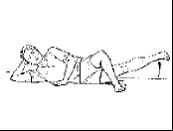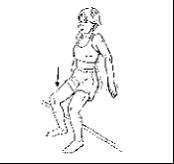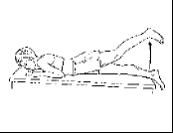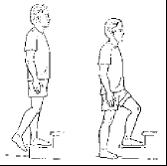Dr. MJ Bazos MD,
Patient Handout
Running: Preventing
Overuse Injuries
What causes an overuse injury in a
runner?
Overuse injury in a runner most often occurs
because of a training error (running too far, too fast, too soon). With every
mile that is run, the feet must absorb 110 tons of energy. Therefore, it is not
surprising that up to 70% of runners develop an injury every year.
How can overuse injury be prevented?
You can decrease your risk of injury by
following these recommendations:
- Do not increase running mileage by more than 10%
per week.
- Do not run more than 45 miles per week. There is
very little evidence that running more than 45 miles per week improves your
performance, but there is a great deal of evidence that running more than 45
miles per week increases your risk for an overuse injury.
- Do not run on slanted or uneven surfaces. The
best running surface is soft, flat terrain.
- Do not "run through pain." Pain is a sign that
should not be ignored, since it indicates that something is wrong.
- If you do have pain when you run, place ice on
the area and rest for 2 or 3 days. If the pain continues for 1 week, see your
doctor.
- Follow hard training or running days with easy
days.
- Change your running shoes every 500 miles. After
this distance shoes lose their ability to absorb the shock of running.
What about
orthotics to reduce the chance of injury?
Orthotics are inserts that are placed in shoes
to correct bad alignment between the foot and the lower leg. You will probably
need orthotics if you have a problem called pronation, which means that the
inside of the foot turns in. If you have bad alignment but no pain with running
and you do not suffer from repeated injuries, you probably do not need
orthotics. Many world class athletes with bad alignment do not wear orthotics.
However, your doctor may suggest orthotics if you have bad alignment and become
injured and do not get better with other measures, such as rest, ice application
and cross-training.
What exercises help prevent or treat
injuries?
Before and after a run, perform specific
stretching exercises. See the pictures below and on the next page that show
stretching exercises. These exercises may also be part of your recovery from an
injury. With each exercise, hold the stretch for at least 15 seconds, and do not
bounce. Stretch until you feel tension but not pain.
If you do develop an injury, your doctor may
suggest particular strengthening exercises. See the pictures on pages 4 and 5
showing strengthening exercises. Every day you should do 3 sets of each
exercise, with 10 repetitions in each set. For the exercises that involve
straight-leg raises, you will want to add ankle weights as the exercises become
easier for you to do. These exercises may also be done as part of your overall
exercise program.
Stretching exercises
Hamstring stretch
Sit with your injured leg straight and
your other leg bent. With your back straight and your head up, slowly lean
forward at your waist. You should feel the stretch along the underside of your
thigh. Hold the stretch for 10 to 15 seconds. Repeat the stretch 6 to 8 times.
This stretching exercise may be helpful for patellofemoral syndrome, patellar
tendinitis and hamstring strain.
Iliotibial band stretch
Sit with your injured leg bent and crossed
over your straightened opposite leg. Twist at your waist away from your injured
leg, and slowly pull your injured leg across your chest. You should feel the
stretch along the side of your hip. Hold the stretch for 10 to 15 seconds.
Repeat the stretch 6 to 8 times. This stretching exercise may be helpful for
iliotibial band syndrome and adductor strain.
Groin stretch
Sit with your feet together, your back
straight, your head up, and your elbows on the inside of your knees. Then slowly
push down on the inside of your knees with your elbows. You should feel the
stretch along the inside of your thighs. Hold the stretch for 10 to 15 seconds.
Repeat the stretch 6 to 8 times. This stretching exercise may be helpful for
adductor strain.
Quadriceps stretch
Stand straight with your injured leg bent.
Grasp the foot of your injured leg with your hand and slowly pull your heel to
your buttocks. You should feel the stretch in the front of your thigh. Hold the
stretch for 10 to 15 seconds. Repeat the stretch 6 to 8 times. This stretching
exercise may be helpful for patellofemoral syndrome, iliotibial band syndrome
and patellar tendinitis.
Calf stretch
Stand with your hands against a wall and
your injured leg behind your other leg. With your injured leg straight, your
heel flat on the floor and your foot pointed straight ahead, lean slowly
forward, bending the other leg. You should feel the stretch in the middle of
your calf. Hold the stretch for 10 to 15 seconds. Repeat the stretch 6 to 8
times. This stretching exercise may be helpful for Achilles tendinitis, plantar
fasciitis and calcaneal apophysitis.
Plantar fascia stretch
Stand straight with your hands against a
wall and your injured leg slightly behind your other leg. Keeping your heels
flat on the floor, slowly bend both knees. You should feel the stretch in the
lower part of your leg. Hold the stretch for 10 to 15 seconds. Repeat the
stretch 6 to 8 times. This stretching exercise may be helpful for plantar
fasciitis, Achilles tendinitis and calcaneal apophysitis.
Strengthening exercises
Straight-leg raise
Lie down with your upper body supported on
your elbows. Tighten the top of the thigh muscle of your injured leg. Raise your
leg on a count of 4, hold for a 2 count and then lower the leg on a 4 count.
Relax your thigh muscles. Then tighten the thigh and repeat. Do 3 sets of 10
repetitions each day. Once your leg gains strength, do the exercise with weights
on your ankle. This strengthening exercise may be particularly helpful for
patellofemoral syndrome or patellar tendinitis.
Straight-leg raise
Lie on your unaffected side, tighten the
thigh muscle of your injured leg and then slowly raise the leg off the floor.
Hold the leg up for a 2 count, and lower it on a 4 count. Relax your muscles.
Then tighten the thigh and repeat. Do three sets of 10 repetitions each day.
Once your leg gains strength, do the exercise with weights on your ankle. This
strengthening exercise may be helpful for iliotibial band syndrome.
Straight-leg raise
Lie on your affected side with the
unaffected leg crossed over the knee of your injured leg. Tighten your thigh
muscles and raise the injured leg about 6 to 8 inches off the floor. Hold for 2
seconds, and then slowly lower your leg. Relax the muscles. Then tighten the
thigh and repeat. Do 3 sets of 10 repetitions each day. Once your leg gains
strength, do the exercise with weights on your ankle. This strengthening
exercise may be helpful for adductor strain.
Standing wall slide
Stand with your back against the wall and
your feet 6 to 8 inches away from the wall. Slowly lower your back and hips
about one-third of the way down the wall. Hold the position for about 10 seconds
or until you feel that the tops of your thigh muscles are becoming tired.
Straighten up and repeat. Perform 10 repetitions each day. This strengthening
exercise may be helpful for patellofemoral syndrome or patellar tendinitis.
Straight-leg raise
Lie on your stomach. Tighten your thigh
muscles and slowly raise your injured leg off the floor on a 4 count. Hold the
leg up for a 2 count, and then lower the leg on a 4 count. Relax your thigh
muscles. Tighten the thigh and repeat. Do 3 sets of 10 repetitions each day.
Once your leg gains strength, do the exercise with weights on your ankle. This
strengthening exercise may be helpful for hamstring strain.
Lateral step-ups
Stand with your injured leg on a stair or
platform that is 4 to 6 inches high. Slowly lower the other leg, striking the
heel on the floor. Straighten the knee of the injured leg, allowing the foot of
the other leg to raise off the floor. Repeat. Do 3 sets of 10 repetitions each
day. This strengthening exercise may be helpful for patellofemoral syndrome and
patellar tendinitis.
